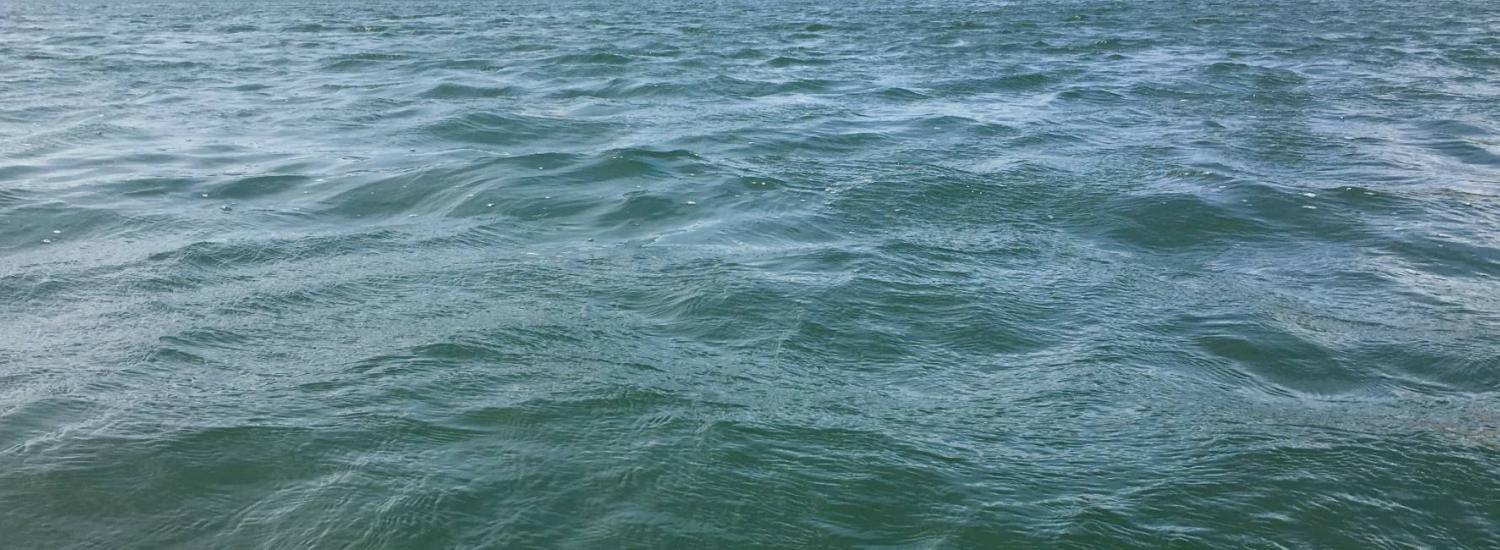Thirty Five Years of Water Science
Protecting the Water Quality of Lake Dillon

Summit County, Colorado, has been growing for decades—its forested slopes and sparkling waters draw more residents and tourists each year. More people and their housing, boats, and activities create wastewater runoff and land disturbance that may harm water quality. Summit County’s Lake Dillon, however, is especially well protected against degradation—thanks to a long-term collaboration of the intergovernmental Summit Water Quality Committee, Denver Water and the CIRES Center for Limnology. Water quality has remained stable despite the region’s rapid growth.
Lake Dillon in June. Photo: Katie Weeman/CIRES
Supported by the two agencies, researchers at the Center for Limnology, part of CIRES at the University of Colorado Boulder, have been monitoring the water quality of Lake Dillon since 1981. On a sampling day in June, research assistants Tim Baker and Stefan Petersen loaded a truck to the brim with research equipment, hooked a up small motor boat, and drove two hours up the winding mountain interstate to Dillon. Once on the water, they used GPS technology find the right spot—the same one they and their colleagues have sampled for 35 years. Here, the water is the depth of a 21-story building (67 meters) and it takes the team several minutes to lower the anchor so that samples can be collected.
Research assistants Tim Baker and Stefan Petersen collect water samples and record measurements at the field site on Lake Dillon. Photo: Katie Weeman/CIRES
According to Dr. William Lewis, Director of the Center for Limnology, our current knowledge of Lake Dillon is based on consistent, frequent monitoring of water quality in the lake and its water sources. Experienced field crews collect samples at multiple depths and locations in the lake and in the rivers that enter the lakes under conditions that range from ideal to challenging. The samples are analyzed by the Limnology Center at CIRES and reviewed annually by the Summit Water Quality Committee, Denver Water, and the State of Colorado.
In the early 1980s, eight years after the federal Clean Water Act was passed, with encouragement from the Environmental Protection Agency, community leaders in Summit County and Denver began talking about how to prevent deterioration of the lake’s water quality. Most importantly, an increase in plant nutrients, especially phosphorus, could stimulate unwanted algal blooms in the reservoir. Algae can discolor clear water and make it difficult to treat for human consumption.
Thirty-six years ago, Center for Limnology researchers began, in cooperation with local and state staff, to consider strategies for controlling enrichment of the lake with algal nutrients, particularly phosphorus. CIRES team members measure water temperature, phosphorus, nitrogen, dissolved oxygen, chlorophyll and many other factors to help decision makers understand and respond to pollution-related changes in the watershed. In response to early measurements, for example, the Summit County Water Quality Committee supported a move away from septic systems toward wastewater treatment systems that most effectively remove phosphorus before sending water back into the watershed.
Water collected from the sampling tube, to be sent back to the lab for testing. Photo: Katie Weeman/CIRES
The collaborative approach worked: even in the face of a growing Summit County population, phosphorus concentrations have remained stable and low, as have other water quality indicators. In 1985, the Summit Water Quality Committee expanded the work to include Green Mountain Reservoir, twenty miles downstream, and surrounding waters.
Back on the lake, the Dillon sampling team plunged a five-meter-long sampling tube into the water, to collect samples from different depths. Battling high winds and a rocking boat, they lowered an electronic gauge into the water, measuring barometric pressure at the surface, as well as temperature, specific conductance, pH, and dissolved oxygen at 1-meter intervals. Baker and Petersen also measured water transparency (related to concentration of suspended solids) and collected zooplankton by pulling a specialized net through the water. The team carefully packed all samples into large coolers for later analysis at the CIRES Center for Limnology laboratory.
June’s measurements aligned with long term trends: phosphorus concentrations remained low in the lake, and algal abundance has declined slowly over the years since 1981.
Photo: Katie Weeman/CIRES
Just as growth rings on a tree form a timeline of environmental trends and high-impact events like floods or droughts, so can decades of water quality records. From the Summit County water timeline, researchers get insight into the effects of droughts, floods, and fire, as well as population growth and climate change, said Dr. Jimmy McCutchan, CIRES researcher and Associate Director of the Center for Limnology.
Water resource managers can refer to long-term measurements for insight into potential consequences of their decisions. Monitoring information can alert officials of these issues so they can make decisions that ensure water quality and biotic diversity remain typical of natural montane waters.
In the case of Lake Dillon, information on water quality and aquatic life has demonstrated the successes of phosphorus control regulations, and justifies continued phosphorus control for the future.
"Ecological research was not the original purpose of this study, but rather the byproduct," McCutchan said. "This work has an applied purpose, but the long-term record has become a very valuable resource for both basic and applied research."